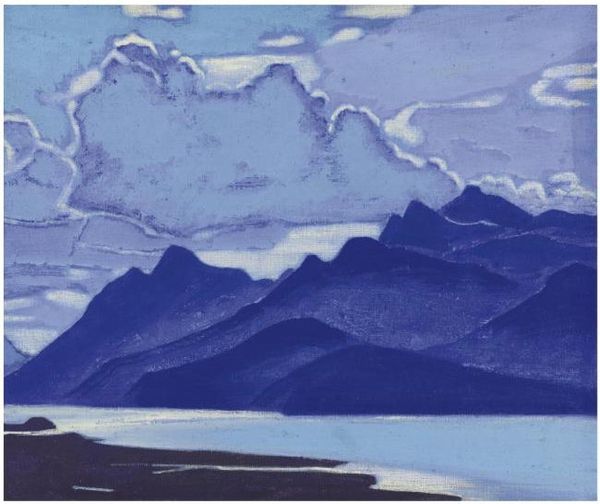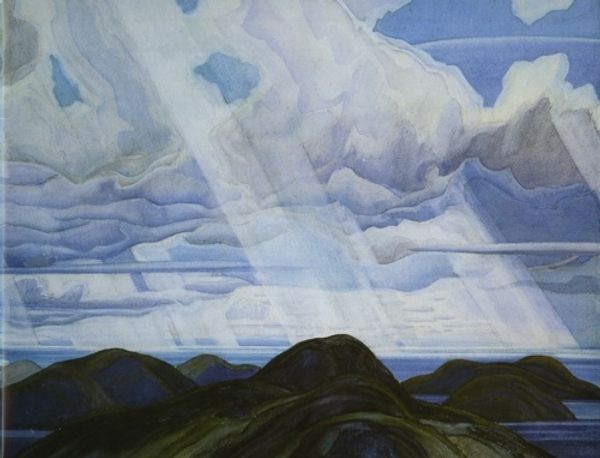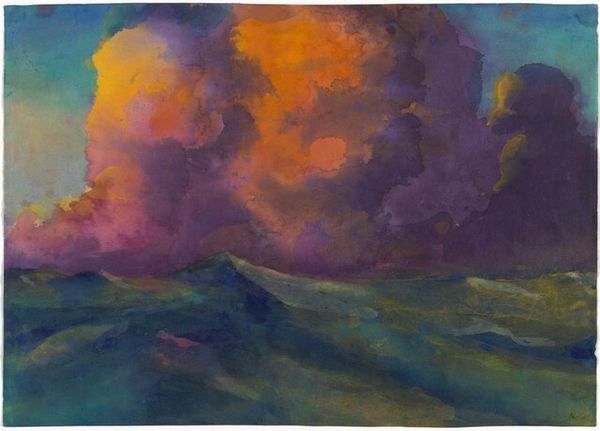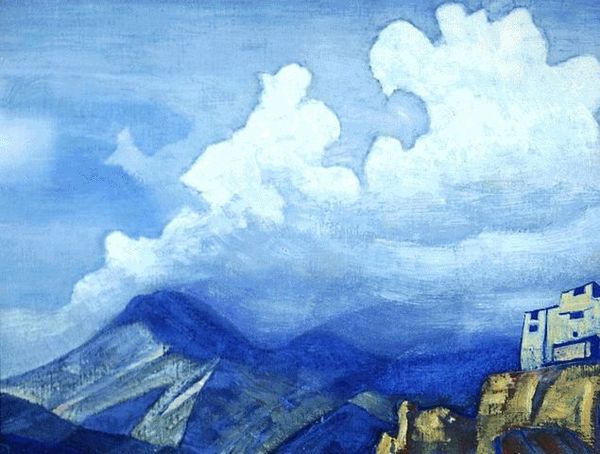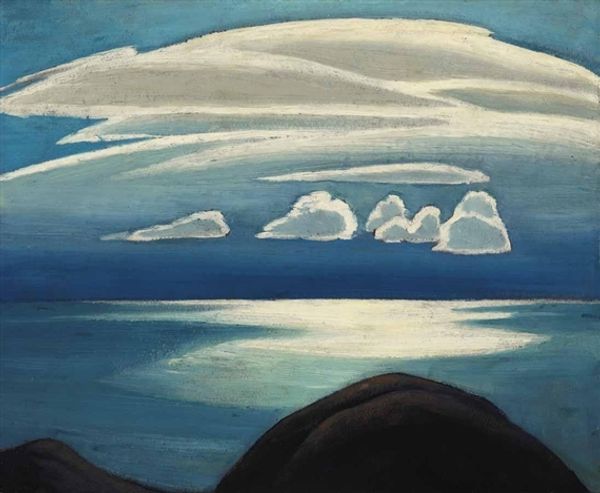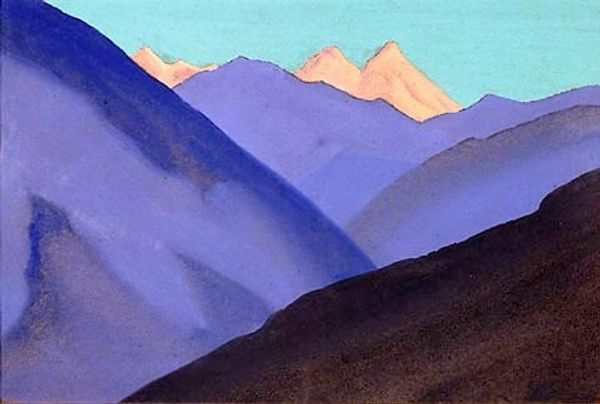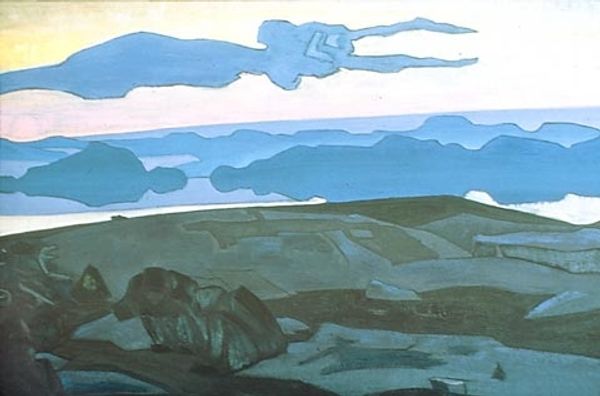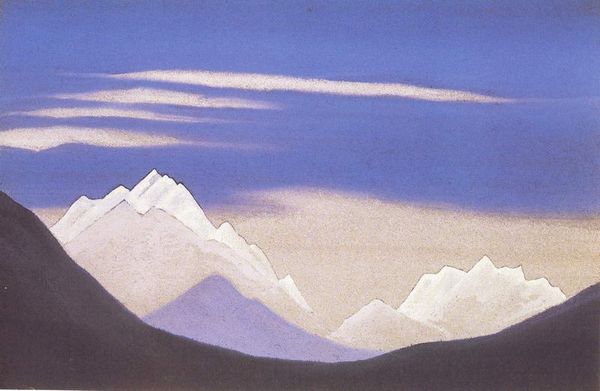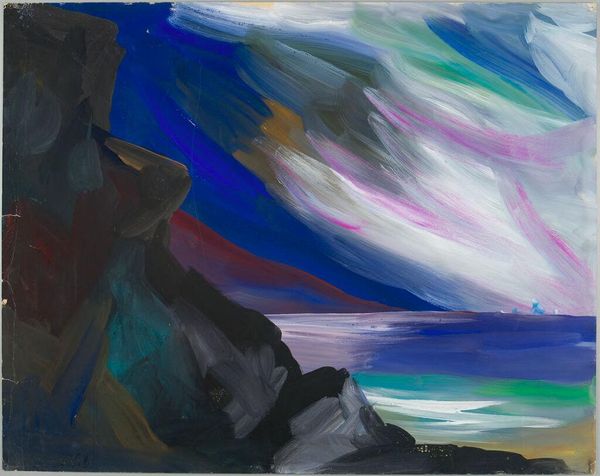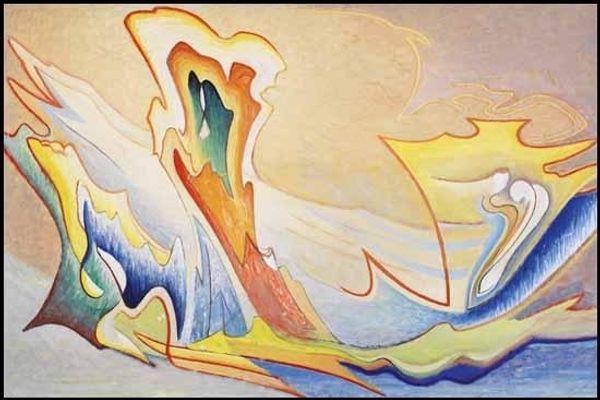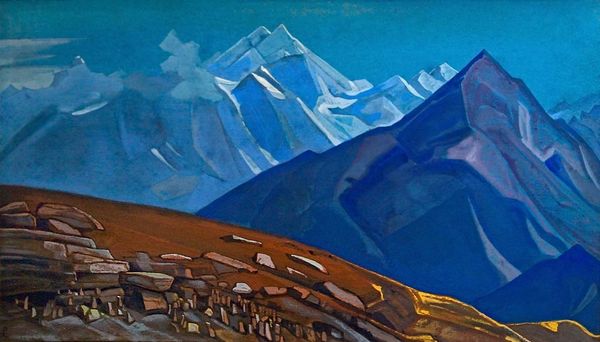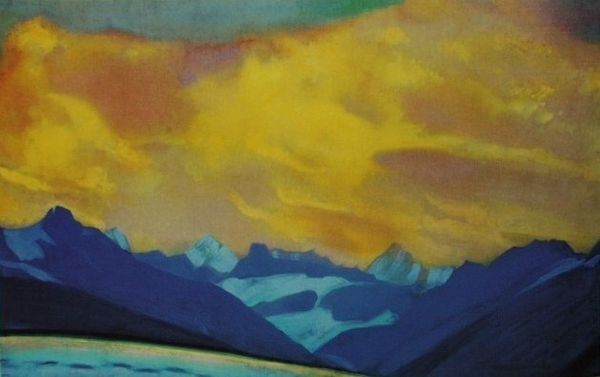
painting, oil-paint
#
painting
#
oil-paint
#
landscape
#
expressionism
#
modernism
#
expressionist
Copyright: Lawren Harris,Fair Use
Curator: This is "Aftermath of Storm - Lake Superior Sketch XXXIV" by Lawren Harris, completed in 1926. Harris, as a leading figure in the Group of Seven, deeply explored the Canadian landscape, and this oil painting encapsulates that fascination. Editor: Immediately, the swirling cloud formations dominating the upper register strike me as incredibly powerful. There's a visual rhythm, almost a dance, between the clouds and the dark land mass below. It creates a distinct atmosphere, something almost apocalyptic yet serene. Curator: That duality speaks to Harris’s larger concern with nature’s sublime power and the spiritual connection one can forge with the land, a common thread with his theosophical beliefs and his interest in transcendentalism. He witnessed a world undergoing intense urbanization and industrial change, so for Harris and many of his contemporaries in the Group of Seven, locating the spiritual power of the land became key for both creating a unique visual language and establishing Canadian national identity. Editor: I agree; those concerns feel present. Looking closely, I notice how the artist reduces elements to simplified, almost geometric shapes. The trees on the left become triangular forms, while the land flattens into horizontal planes. He is playing with abstraction. Curator: Indeed. It also prompts a conversation about colonial interventions on native lands and the Group of Seven’s role within this socio-historical framework. By aestheticizing uninhabited wilderness in ways which promote an almost hyper-nationalistic sentiment, do they implicate themselves as players in colonial erasure? Editor: I see your point. It's undeniable the landscapes celebrated were often understood differently, perhaps even sacred, to Indigenous communities. It leads me back to the cloud formations, that dominating arch above the relatively meager landscape—visually, that overarching arch both dwarfs and almost suffocates the land and hints at something like the sublime or terror in the face of nature. Curator: In our contemporary context, Harris’s landscapes prompt us to reflect upon the political charge carried by any representations of land. His images of apparently ‘untouched’ terrains have had a profound impact on discourses of nationhood, which demands careful engagement. Editor: And what a potent use of simplification—such dramatic tension achieved with seemingly effortless formal devices! Curator: Precisely. A testament to Harris’s lasting influence.
Comments
No comments
Be the first to comment and join the conversation on the ultimate creative platform.
